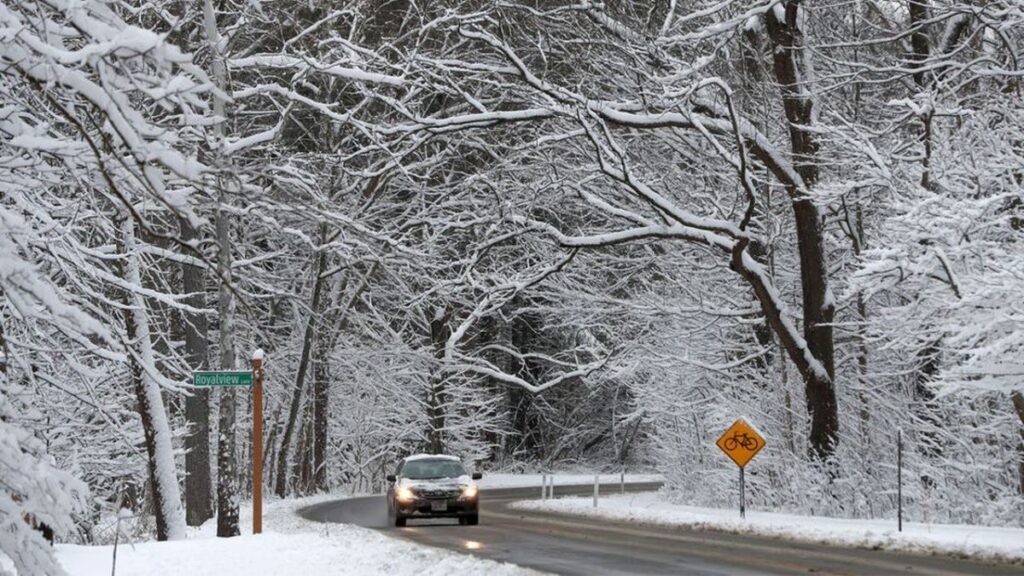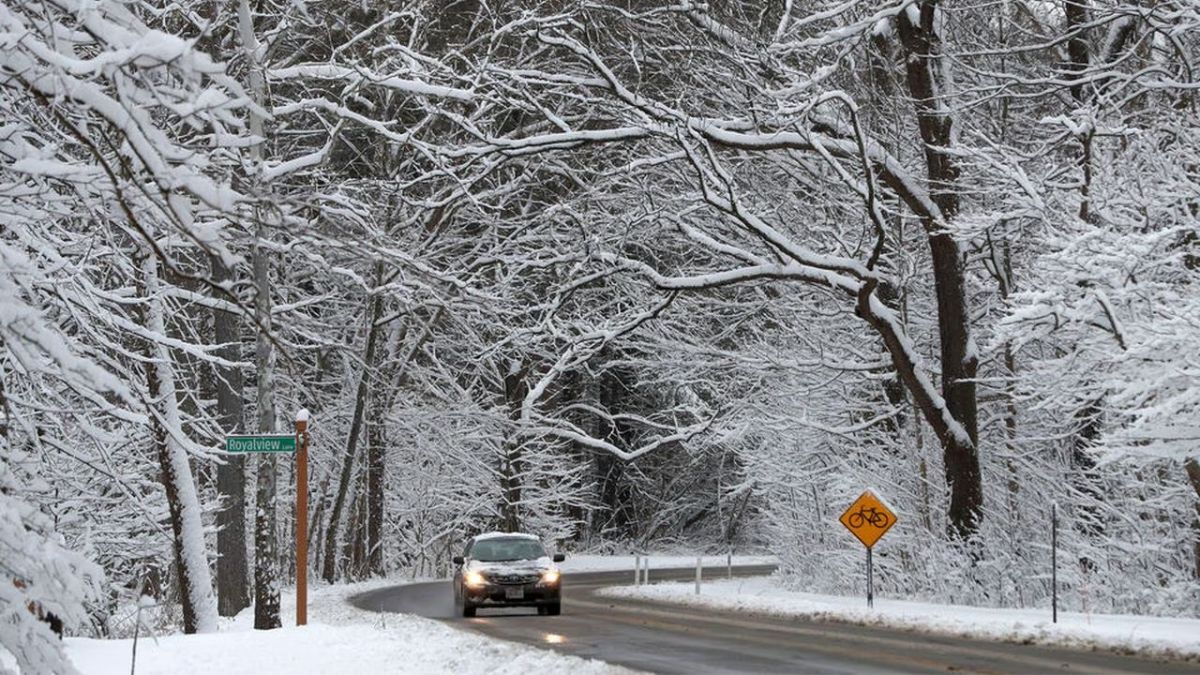Yes, it does snow in Ohio. Ohio experiences winter conditions characterized by subfreezing temperatures and snowfall. The extent and frequency of snowfall can vary across different regions of the state. Northern Ohio, including cities such as Cleveland and Toledo, generally experiences more snow compared to the southern regions.
Lake-effect snow is a significant factor in northern Ohio due to the proximity of Lake Erie. Central and southern Ohio receive less snowfall, but snow is still a regular occurrence in winter. It is important to note that even in regions with less snowfall, winter weather conditions can still impact daily life and travel.

Ohio is located in the Midwestern United States. It is known for its diverse climate. Many people wonder whether Ohio experiences snowfall during the winter months. In this article, we will explore the climate patterns of Ohio and determine whether snow is a common occurrence in the state.
Location Overview
Ohio is a state with a diverse landscape and rich history. It is bordered by Lake Erie to the north, Pennsylvania to the east, West Virginia and Kentucky to the southeast, Indiana to the west, and Michigan to the northwest.
Geographically, Ohio encompasses various features, including plains, rolling hills, forests, and rivers. The state has a total area of approximately 116,096 square kilometers, making it the 34th largest state in the country.
Ohio is divided into five distinct regions, the Lake Erie Shoreline, the Till Plains, the Appalachian Plateau, the Central Lowlands, and the Bluegrass Region. Each region offers its own unique characteristics, landscapes, and attractions.
The state’s capital and largest city is Columbus, located in the Central Lowlands region. Other major cities in Ohio include Cleveland, Cincinnati, Toledo, and Akron.
In terms of climate, Ohio experiences four distinct seasons. Summers are typically warm and humid, while winters are cold with the potential for snowfall. Spring and autumn offer mild temperatures and colorful foliage, making them popular seasons for outdoor activities.
Nature enthusiasts can explore Ohio’s numerous state parks, forests, and lakes, offering hiking, camping, and fishing opportunities. The Cuyahoga Valley National Park, located between Cleveland and Akron, is a popular destination for outdoor recreation and showcases the state’s natural beauty.
Geography and Climate of Ohio
The geography of Ohio influences the distribution of snowfall across the state. Northern Ohio, particularly along the Lake Erie Shoreline, receives higher amounts of snowfall due to lake-effect snow. Cities like Cleveland and Toledo often experience heavier snowfall.
On average, central and southern Ohio receive less snowfall, with milder winters in the Till Plains and southwestern regions. The Appalachian Plateau in the southeast also sees lower snowfall. However, individual winter storms can bring significant snowfall to any part of the state.
To comprehend whether Ohio receives snow, it is essential to understand the state’s climate. Ohio has a humid continental climate characterized by distinct seasons. The state experiences precipitation throughout the year, but the type of precipitation varies depending on the season.
Historical Snowfall Record
Ohio occasionally experiences severe snowstorms that can lead to significant snow accumulation and disrupt daily life. These storms, often accompanied by strong winds, can cause hazardous road conditions, flight cancellations, and temporary closures of schools and businesses.
The following are a few examples of notable snowfall events and records in Ohio:
- Blizzard of 1978
One of the most significant snowstorms in Ohio’s history, the Blizzard of 1978, struck the state from January 25 to January 27. It brought heavy snowfall, high winds, and extremely low temperatures. Some areas recorded over 20 inches of snow, while others saw drifts reaching 20 feet or higher.
- Snowfall Records
Several cities in Ohio hold snowfall records for specific timeframes. For example, Cleveland recorded its highest seasonal snowfall of 117.9 inches during the winter of 2004-2005. Toledo experienced its snowiest month on record in January 1978, with a total of 38.8 inches.
Some notable winter storms in recent years include the December 2004 snowstorm that blanketed much of the state, the “Snowmageddon” storm in February 2010, and the Winter Storm Harper in January 2019.
Winter Season & Snowfall Pattern
Subfreezing temperatures and snowfall are common in Ohio in winter. The onset of winter typically brings a shift in weather patterns, resulting in colder temperatures and the potential for snowstorms. However, the extent and frequency of snowfall can vary across different regions of the state.
Ohio’s snowfall patterns vary due to its diverse topography. The northern parts of the state, including cities such as Cleveland and Toledo, generally experience more snow compared to the southern regions.
Lake-effect snow is a significant factor in northern Ohio due to the proximity of Lake Erie. Cold winds passing over the warmer lake waters can result in intense snowfall, particularly in the snowbelt region.
Central and southern Ohio receive less snowfall compared to the northern parts of the state. However, it is important to note that even in these regions, snowfall is a regular occurrence during the winter months.
Locations to Enjoy Snow
Ohio offers several locations where individuals can enjoy the snow and partake in various winter activities. Here are a few popular destinations for snow enthusiasts:
- Northeast Ohio Snowbelt
The snowbelt region in northeastern Ohio, including cities like Cleveland and Akron, receives significant snowfall due to lake-effect snow from Lake Erie. This area offers various opportunities at resorts like Boston Mills/Brandywine and Alpine Valley.
- Cuyahoga Valley National Park
Located between Cleveland and Akron, Cuyahoga Valley National Park transforms into a winter wonderland during snowy months. The park’s scenic trails and picturesque landscapes provide cross-country skiing, snowshoeing, and winter hiking opportunities.
- Mohican State Park
Located in central Ohio near Loudonville, Mohican State Park offers beautiful winter scenery and a range of outdoor activities. Visitors can explore the park’s trails for cross-country skiing, snowmobiling, and winter wildlife viewing.
- Hocking Hills State Park
Situated in southeastern Ohio, Hocking Hills State Park showcases stunning winter landscapes with frozen waterfalls and icy cliffs. The park’s trails offer winter hiking, photography, and even limited ice-climbing opportunities.
- Mad River Mountain
Located near Zanesfield, Mad River Mountain is a popular winter sports destination. It features skiing and snowboarding slopes for all skill levels and snow tubing lanes for a fun-filled day in the snow.
- Snow Trails
Located near Mansfield, Snow Trails is another well-known ski resort in Ohio. It offers skiing, snowboarding, and tubing facilities, beginners’ lessons, and a terrain park for more advanced riders.
- Geneva-on-the-Lake
This charming lakeside community in northeastern Ohio offers a unique winter experience. Visitors can enjoy ice fishing, snowmobiling on nearby trails, or simply take in the serene winter beauty of Lake Erie.
These are just a few examples of the many locations in Ohio where you can embrace the winter season and enjoy various snow-related activities.
Factors Influencing Snowfall
Snowfall is influenced by factors such as temperature, moisture availability, atmospheric lifting mechanisms, wind direction and speed, topography, latitude, elevation, and storm systems. Cold temperatures below freezing are necessary for snowfall to occur.
Sufficient moisture in the atmosphere and lifting mechanisms like frontal systems or orographic lifting contribute to snow formation. Wind direction and speed affect areas prone to enhanced snowfall, such as through lake-effect snow.
Topography, including mountains and valleys, can alter snowfall patterns. Latitude and elevation impact overall temperature and the likelihood of snowfall. Storm systems determine the movement and intensity of snowfall, with low-pressure systems bringing moisture and colder temperatures.
Conclusion
Snow is indeed a part of Ohio’s winter climate. While the amount of snowfall may vary across different regions of the state, Ohioans can expect winter conditions characterized by subfreezing temperatures and the potential for snowstorms.
Whether you enjoy the beauty of a winter wonderland or navigate the challenges brought by snow, Ohio’s climate offers a diverse range of experiences during the winter season.
